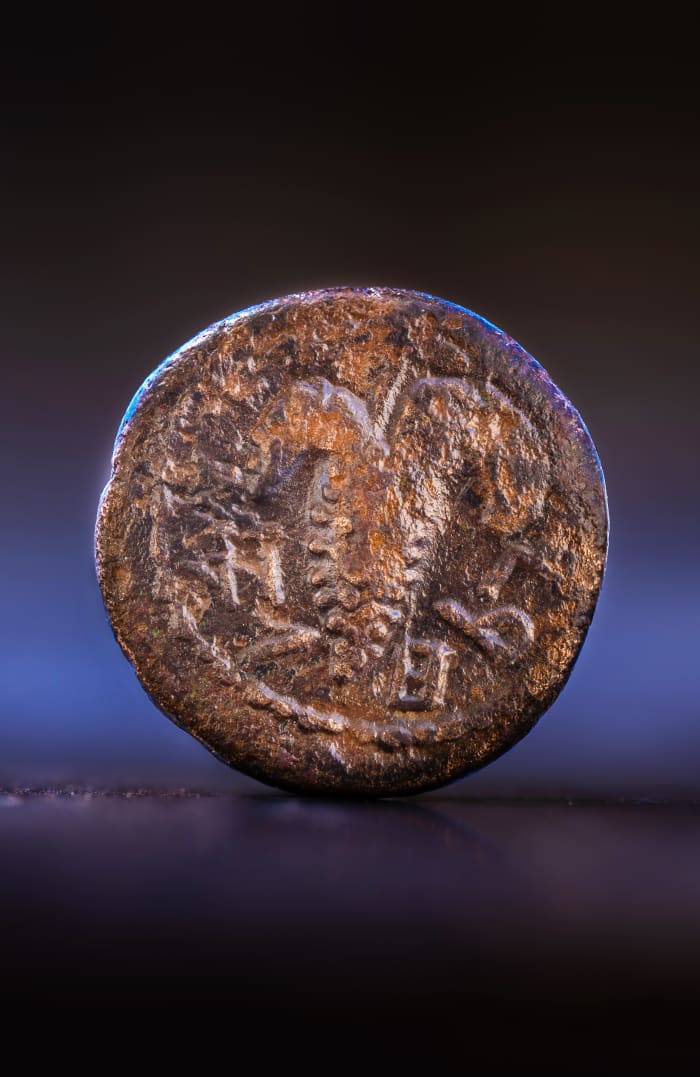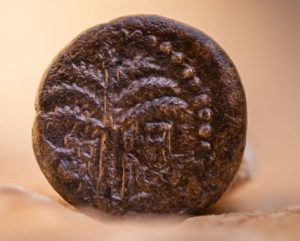
A rare bronze coin minted by the rebels of the Bar Kokhba Revolt (132-136 CE) and inscribed with the name Jerusalem was discovered in the Davidson Archaeological Garden at the foot of the Temple Mount.
Of over twenty-thousand ancient coins found in excavations in the Old City, only four were issued by the Bar Kokhba rebels. So far, archaeologists had attributed this to the fact that although Bar Kokhba’s aim was to free Jerusalem from the Roman yoke, and prevent the emperor Hadrian from erecting a pagan city – Aelia Capitolina – on its ruins, he never succeeded in conquering the city (although his efforts to seem to have at least temporarily halted some of Hadrian’s building projects there).
Archaeologists Moran Hagbi and Dr. Joe Uziel of the Israel Antiquities Authority, who are directing the excavations in the area between the City of David and the Temple Mount, believe that the Bar Kokhba coins were brought to Jerusalem as battle souvenirs by Roman soldiers of the tenth legion, who helped suppress the revolt and then returned to their barracks in Jerusalem.
This coin is unique as it’s the only Bar Kokhba coin discovered so far bearing the name of Jerusalem. One side of the coin shows a cluster of grapes, and the abbreviated inscription “Year Two of Israel’s freedom”; the obverse side has a palm tree – the symbol of ancient Judea – and the word “Jerusalem.”
The rebels didn’t mint new coins, but re-used Roman ones by impressing images associated with Judea and the revolt over the original designs. Whether this was the result of necessity or choice is still hotly debated by scholars; some assume the rebels had neither the tools nor raw materials for producing their own coinage, while others believe these coins were a statement of intent – that Bar Kokhba and his followers aimed to trample both the hated Roman regime and its currency underfoot, and replace them.
Bar Kokhba coins were imprinted with the façade of the Temple, with musical instruments used in the temple service such as trumpets, lyres and harps and were inscribed with the year “of the redemption of Israel” or “the freedom of Israel.” Examples were featured on the State of Israel’s first stamps, illicitly produced in 1948 prior to the declaration of the state .
Simeon Bar Kosiba’s rebellion lasted five years, in the course of which it took a heavy toll of Roman casualties but was finally crushed by Hadrian himself. Hundreds of towns and villages from the Hebron hills to the Galilee were wiped out, and a blow from which the Jewish community of the holy land was not to recover for 1800 years.

